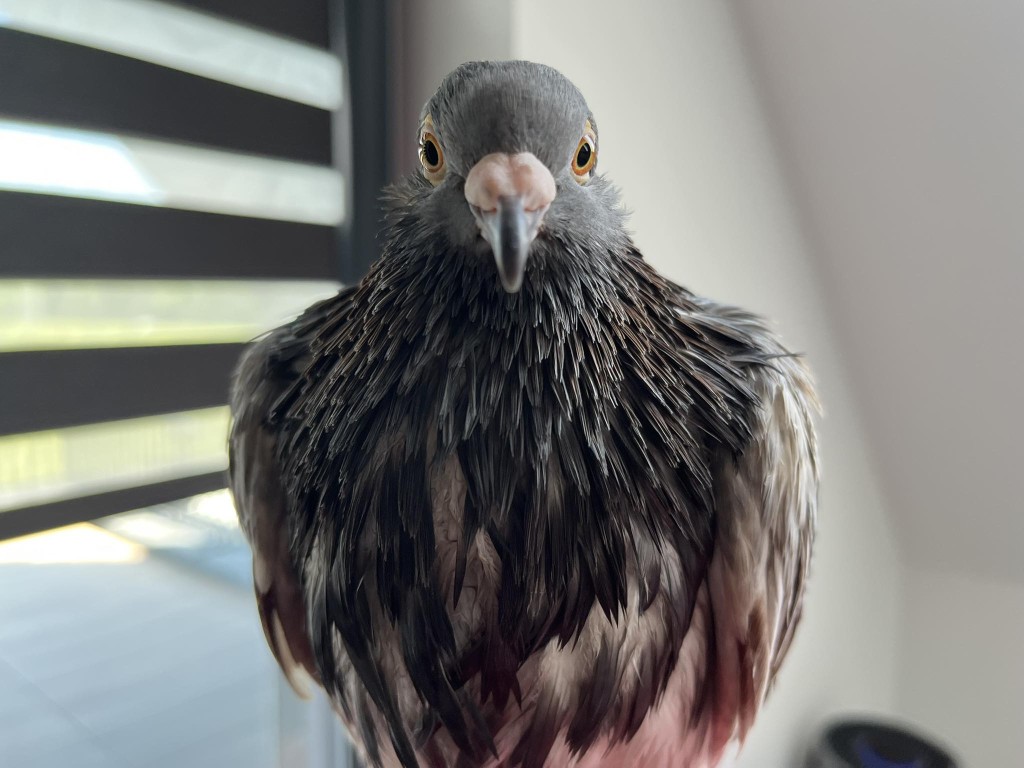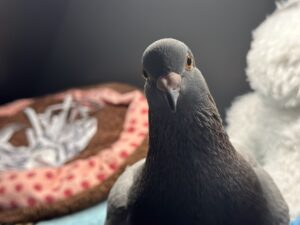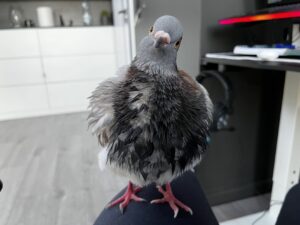Pigeons, often referred to as “rats with wings,” are among the most recognizable birds in the world, particularly famous for their ubiquitous presence in urban landscapes. From the towering skyscrapers of New York City to the narrow streets of London, these adaptable birds have proven their ability to thrive in various environments. Yet, have you ever paused to wonder just how many pigeons are sharing this planet with us?
This article aims to shed light on this question, offering an in-depth look into the world of pigeons, the factors influencing their populations, and the methods used by scientists to estimate their global numbers. Along the way, we will delve into the reasons behind their prevalence in cities, their ecological role, and the complexities surrounding their conservation and management. Our journey into the world of pigeons underscores the broader significance of understanding the biodiversity around us and highlights the intricate balance of our shared coexistence with wildlife. Welcome to a flight through the skies of our cities, in pursuit of the global pigeon population.

How many pigeons are in the world?
How many pigeons are in the world? Factors Influencing Pigeon Population
Pigeon populations, much like those of other animals, are subject to a variety of factors that influence their growth and distribution.
A key factor in pigeon population growth is the availability of food sources. Pigeons are primarily granivorous, meaning their diet consists largely of seeds and grains, though they are known to be quite opportunistic, also consuming fruits, vegetables, and even human food waste. In urban environments, the inadvertent (and sometimes intentional) feeding by humans significantly contributes to their population boom.
Check my article about What Do Pigeons Eat?
Predation and diseases also play crucial roles in regulating pigeon numbers. Common predators include birds of prey, such as hawks and falcons, while disease-causing organisms, like viruses, bacteria, and parasites, pose another set of threats. Despite their robust nature, pigeons can be susceptible to diseases such as avian influenza or Newcastle disease, which can significantly impact local populations.
Lastly, urbanization and human intervention have significantly influenced pigeon populations. The construction of buildings provides pigeons with numerous nesting sites similar to the cliff dwellings of their rock dove ancestors. Conversely, human efforts to control pigeon populations, through methods such as trapping, poisoning, or habitat modification, can cause local population declines.
These factors collectively shape the global pigeon population, promoting growth in some areas while causing declines in others. Understanding these dynamics is vital in predicting pigeon population trends and managing our coexistence with these birds in urban ecosystems.

Pigeon Population in Urban Areas
Pigeons are especially prevalent in cities, a phenomenon that can be attributed to a few key factors. Urban environments offer ample food sources, whether from unintentional litter or deliberate feeding, and provide plenty of roosting and nesting opportunities in the form of buildings and bridges. These conditions mimic the natural cliffside habitats of their ancestors, the rock doves, making cities an ideal home for them.
To provide a snapshot of the extent of urban pigeon populations, let’s consider a few major cities. New York City is thought to be home to approximately one million pigeons. London’s Trafalgar Square alone is often occupied by thousands of pigeons, contributing to the city’s overall estimated population in the hundreds of thousands. Paris, often called “the city of pigeons,” also hosts a significant pigeon population, although official estimates vary greatly due to the challenges of counting these birds accurately.
The impact of these urban pigeon populations on local environments and human society is significant. From an ecological perspective, pigeons contribute to nutrient cycling and serve as prey for urban predators. However, they can also cause damage to buildings and monuments due to the corrosive effects of their droppings. In terms of public health, while the risk is low, pigeons can potentially spread diseases to humans. They can also become a nuisance due to their noise, droppings, and occasional aggressive behavior, especially when feeding. Balancing these factors is key to managing our relationship with these ubiquitous city dwellers.
Check my article about Do Pigeons Make Nests?

How many pigeons are in the world? Estimation Methodologies
Various methods have been employed to estimate bird populations over the years. These can range from traditional techniques like direct counting during field surveys, mark and recapture techniques, to more recent ones involving advanced technologies such as satellite imagery and acoustic monitoring.
In the case of pigeons, especially in urban environments, a combination of methods is often used. Field surveys involving direct counting or point counts are typically performed in smaller, manageable areas. In larger urban expanses, scientists may resort to techniques such as counting individuals at roosting sites or using statistical models based on sampled data to extrapolate to the entire city.
Each of these methods, however, comes with its own strengths and limitations:
- Direct counting: This method can provide accurate results in small areas with high visibility but becomes impractical and less accurate for larger areas or dense populations.
- Mark and recapture: This technique can provide good population estimates but may be challenging due to the difficulty of marking and recapturing pigeons.
- Statistical models: While they allow estimates over large areas and can incorporate various factors affecting population size, these models’ accuracy heavily relies on the quality of the sampled data and the assumptions made in the model.
- Technological methods: Techniques such as satellite imagery and acoustic monitoring can cover large areas and inaccessible terrains. However, they often require specialized equipment, substantial resources, and may have limitations in distinguishing between similar species.
Current Estimates of Global Pigeon Population
Current research and studies on the global pigeon population are vast and varied, ranging from local surveys in specific cities to broader studies using a combination of direct counting, modelling, and technological methods. Scientists from around the world are continually working to refine these estimates, incorporating various factors such as food availability, predation, and human impact.
While exact numbers are challenging to determine due to the dynamic nature of pigeon populations and limitations in counting methods, some estimates suggest there could be several hundred million pigeons worldwide. These figures vary based on the region and urban-rural divide, with urban areas, especially major cities, being hotspots of pigeon populations.
Discrepancies and variations in these estimates are not uncommon and can be attributed to various factors. The counting methods used, the timing of the count, local conditions, and even the specific definition of what constitutes a “pigeon” (i.e., whether to include all species of the pigeon family or only the common city-dwelling ones) can all influence the final estimates. These complexities underscore the need for continuous research and standardization in methodologies to achieve more accurate global pigeon population estimates.

How many pigeons are in the world? Final Thougths
This article explores the intriguing question of how many pigeons exist worldwide. Through a comprehensive look at pigeon species, their growth factors such as food sources, predation, diseases, and human intervention, we’ve highlighted their significant prevalence in urban environments like New York, London, and Paris.
Various estimation methodologies, each with its strengths and limitations, suggest a global pigeon population in the range of several hundred million, although discrepancies exist due to regional and methodological differences. The article concludes by emphasizing the importance of continued research, public awareness, and balanced policies for managing our relationship with pigeons and preserving the intricate balance of our shared ecosystems.
What is the estimated global pigeon population?
While exact numbers are hard to determine, some estimates suggest there could be several hundred million pigeons worldwide.
Why are pigeons so prevalent in urban environments?
Pigeons thrive in cities due to the abundance of food sources, often from human litter or deliberate feeding, and the availability of roosting and nesting sites that mimic their natural cliffside habitats.
How are pigeon populations estimated?
Pigeon populations are estimated through various methods such as direct counting during field surveys, mark and recapture techniques, statistical modeling, and more recently, technologies like satellite imagery and acoustic monitoring.
Why do estimates of the global pigeon population vary?
Variations in population estimates can be attributed to different counting methods, the timing of the count, local conditions, and even the specific definition of what constitutes a “pigeon.”
What factors influence pigeon population growth?
The primary factors influencing pigeon population growth are food availability, predation and disease, and urbanization and human intervention.
Can pigeons spread diseases to humans?
While the risk is generally low, pigeons can potentially spread diseases to humans. However, direct contact with these birds or their droppings is typically necessary for transmission to occur.
What is the estimated pigeon population in New York City?
Although it’s challenging to determine the exact number, some estimates suggest New York City is home to approximately one million pigeons.
How do pigeons impact the urban environment?
Pigeons can contribute to nutrient cycling and serve as prey for urban predators. However, they can also damage buildings and monuments due to their droppings and potentially spread diseases to humans.
What measures are taken to control pigeon populations in urban areas?
Measures to control pigeon populations include habitat modification, the use of deterrents, trapping, and sometimes, poisoning. Public education about not feeding pigeons also plays a significant role.
How does the availability of food influence pigeon populations?
Pigeons are primarily granivorous, and the availability of food, especially in urban environments where humans unintentionally or intentionally feed them, plays a major role in their population growth.



